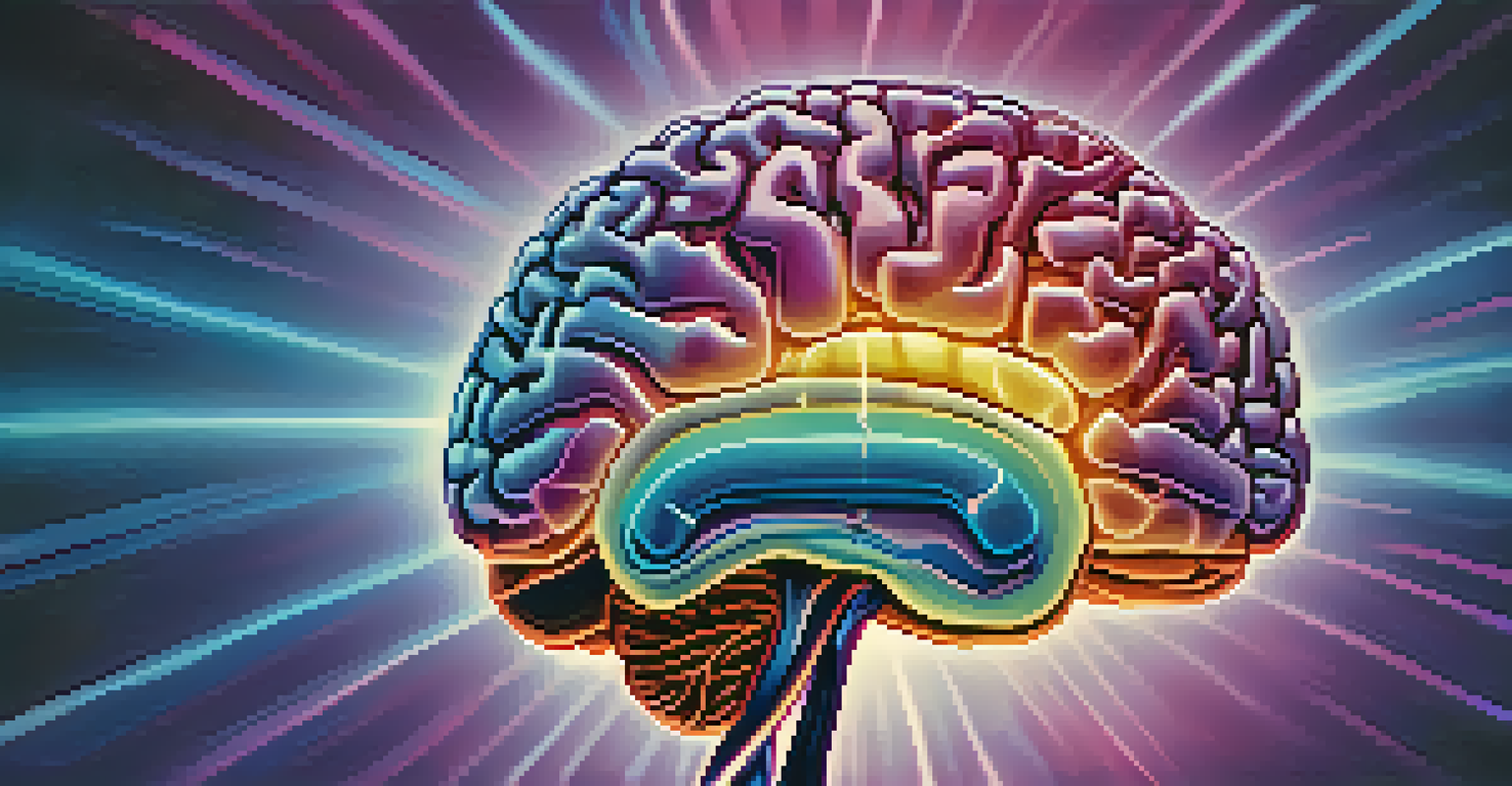The Synergy of Hallucinogens and Cognitive Behavioral Techniques

Understanding Hallucinogens: A Brief Overview
Hallucinogens are substances that alter perception, mood, and cognitive processes. Common examples include psilocybin, found in magic mushrooms, and LSD, a synthetic compound. These substances can induce profound experiences that some users describe as life-changing or enlightening.
Psychedelics can help people explore their thoughts and feelings in a way that may lead to profound insights and personal growth.
Historically, hallucinogens have been used in various cultures for spiritual and healing purposes. Recent research has shown potential therapeutic benefits, particularly in mental health treatments. This has sparked renewed interest in how these substances could be integrated into modern psychological practices.
Understanding the effects of hallucinogens is crucial for exploring their synergy with cognitive behavioral techniques (CBT). While the experiences can vary widely, they often provide users with new perspectives on their thoughts and behaviors, which is where CBT comes into play.
What is Cognitive Behavioral Therapy (CBT)?
Cognitive Behavioral Therapy is a structured, goal-oriented approach to treating various psychological conditions. It focuses on the relationship between thoughts, feelings, and behaviors, helping individuals identify and change negative thought patterns. This therapy is widely used for conditions like depression, anxiety, and PTSD.

The core principle of CBT is that our thoughts influence our emotions and behaviors. By changing maladaptive thoughts, individuals can alter their emotional responses and behaviors, leading to improved mental health outcomes. It often involves techniques like cognitive restructuring and exposure therapy.
Hallucinogens and Therapy Synergy
Integrating hallucinogens with cognitive behavioral therapy (CBT) may enhance therapeutic experiences and promote healing.
Integrating hallucinogens with CBT could enhance the therapeutic experience by providing a unique lens through which patients can examine their thoughts and feelings. The profound insights gained during a hallucinogenic experience can act as a catalyst for deeper understanding and healing.
The Science Behind Hallucinogens and Therapy
Recent studies have shown that hallucinogens can lead to neuroplasticity, which is the brain's ability to reorganize itself by forming new neural connections. This can be particularly beneficial for mental health treatments, as it allows individuals to break free from entrenched patterns of thinking. The combination of hallucinogens and therapy could create an environment conducive to significant psychological change.
The mind is not a vessel to be filled, but a fire to be kindled.
Research has indicated that hallucinogens can enhance emotional processing, making it easier for individuals to confront and work through difficult feelings. When paired with CBT, this emotional openness can lead to deeper therapeutic engagement and more profound healing experiences.
While more research is needed, the potential synergy between hallucinogens and cognitive behavioral techniques is an exciting area of exploration. It challenges traditional approaches to therapy, opening doors to new methods of healing.
Case Studies: Successful Integrations
Several case studies have highlighted the potential benefits of combining hallucinogens with CBT. For instance, participants in trials using psilocybin have reported significant reductions in anxiety and depression when coupled with guided therapy sessions. These findings suggest that the psychedelic experience may enhance the efficacy of traditional therapeutic methods.
In one notable case, a patient with severe PTSD found that a single session with MDMA, combined with CBT, allowed them to process traumatic memories in a way they had never experienced before. This suggests that the emotional release facilitated by hallucinogens can complement cognitive therapies effectively.
Research Supports New Approaches
Ongoing studies indicate that combining hallucinogens with established therapeutic techniques could lead to significant mental health improvements.
These examples illustrate the transformative potential of integrating these two modalities. As more practitioners explore this synergy, we may uncover new pathways for healing and personal growth.
Challenges and Considerations in Integration
While the combination of hallucinogens and CBT shows promise, there are challenges to consider. The legal status of many hallucinogens can complicate their use in therapeutic settings. Additionally, not all individuals may respond positively to hallucinogens, making careful screening essential.
There are also concerns about the potential for misuse or adverse reactions. It’s crucial that this approach is conducted in a safe, controlled environment with trained professionals. This ensures that the therapeutic experience remains beneficial rather than harmful.
Moreover, therapists must be thoroughly educated about both hallucinogens and CBT techniques to maximize the potential benefits. As research continues to evolve, guidelines will need to be established to navigate these complexities.
Future Directions: Research and Therapy
The future of integrating hallucinogens with cognitive behavioral techniques looks promising, with ongoing research expanding our understanding of their combined effects. Clinical trials are paving the way for more comprehensive studies that could validate the efficacy of this approach. As societal perceptions shift, we may see more acceptance of these therapies in mainstream practices.
With a growing body of evidence supporting the therapeutic potential of hallucinogens, practitioners are encouraged to explore innovative treatment modalities. This could lead to the development of new protocols that safely incorporate psychedelics into therapeutic practices, enhancing patient outcomes.
Challenges in Therapeutic Integration
Despite the potential benefits, legal and safety concerns must be addressed for the effective integration of hallucinogens in therapy.
Ultimately, the journey toward understanding the synergy of hallucinogens and CBT is just beginning. As researchers, therapists, and patients engage in this exploration, we may uncover powerful tools for transformation and healing.
Conclusion: Embracing a New Therapeutic Paradigm
The integration of hallucinogens and cognitive behavioral techniques represents a shift in how we approach mental health treatment. By recognizing the potential benefits of both modalities, we can foster a more holistic understanding of healing. This synergy offers a pathway to deeper self-exploration and emotional healing for many individuals.
As we move forward, it’s essential to remain open-minded and research-driven. By embracing innovative approaches, we can better meet the diverse needs of those seeking support. The collaboration between hallucinogens and CBT could pave the way for transformative therapeutic experiences.

In conclusion, the journey toward integrating these two powerful tools in therapy holds great promise. With continued research and careful implementation, we can unlock new possibilities for mental health treatment that honor the complexity of the human experience.